Dublin's Dark History
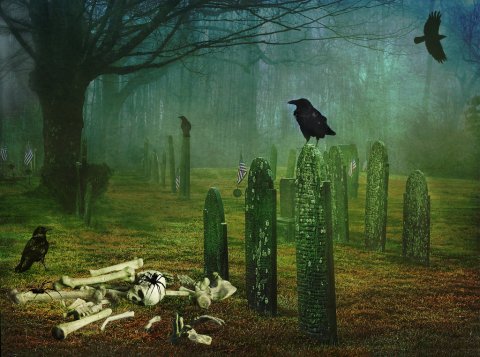
Darkey Kelly was an infamous brothel keeper from Dublin in the 18th century who ran the notorious Maiden Tower brothel off Fishamble St. There are a number of different stories about Darkey. In one she was the lover of Simon Luttrell who was a member of the spooky Hellfire Club in Dublin. He was also the Sherriff of Dublin at the time and he claimed that she killed their newborn child in a black magic ritual after looking for money off him. No body was ever found though. However, there were at least six bodies of local craftsmen found in the cellars of her brothel! She was partially hung and then burned alive at the stake on Baggot St. Whatever her real story was, we will probably never know as the Sherriff ensured that she would never speak. Whatever was going on, it led to riots afterwards in the city by the girls from her brothel.
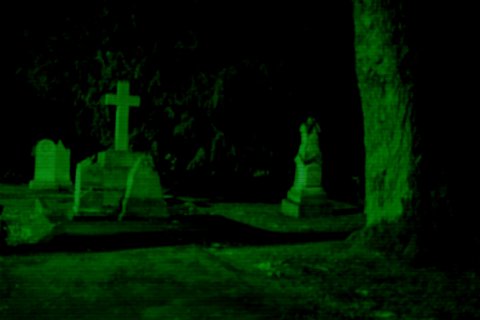
The medical schools of the 18th and 19th centuries thought nothing of hunting for fresh bodies in Dublin, proving once again that doctors are an odd bunch. Medical students at the time often robbed graves to get extra money to pay for their studies. The Bullys’ Acre or Hospital Fields at Kilmainham was a popular spot. Soldiers attached to the nearby Royal Hospital were always on the alert for grave robbers mainly because many of their comrades were buried there.

John Toler was Ireland’s most hated man in the 1700s. First of all he was a judge, which meant that he was always going to find it hard to win a popularity contest. He made matters worse for himself with his cruel streak. One story has it that he was on a carriage journey back from a country court when his footman fell ill. Toler refused to stop and rushed the carriage onwards to Cabra. When the poor lad eventually died, Toler pushed the body out and carried on home for his dinner. Despite this he managed to gain the title of Lord Norbury, which must have doubly annoyed lots of people. It wasn’t as if he was a good judge either. His courts were so disorganised that they were constantly referred to as a circus by other judges. Toler’s habit of falling asleep in court was never going to go down well but the fact that he was so keen on handing out the noose as a sentence meant that he became notorious. It was the hanging of Irish revolutionary Robert Emmet which catapulted him into public enemy number one position. When he died, he returned as a black dog that they say still haunts the streets of Dublin. This is obviously not the type of guy to have in the hostel kitchen sorting out whose turn it is to wash up.

Patrick Dunphy was a farmer convicted of the murder of his two sons, Eddie who was nine and John who was eleven. On the 27th September 1899, he poisoned one son with
strychnine; and on 17th December, he despatched the other in a similar fashion. He committed the crimes in order to claim a small amount of insurance money.
There was a widespread belief that Dunphy would be reprieved because the execution coincided with a visit to the country by Queen Victoria, but the Home Secretary refused because of the cold-blooded nature of the crime. Hanged by Thomas Scott; it was the first execution in Waterford for 36 years. The execution of thirty four year old Dunphy took place on the 10th April 1900.
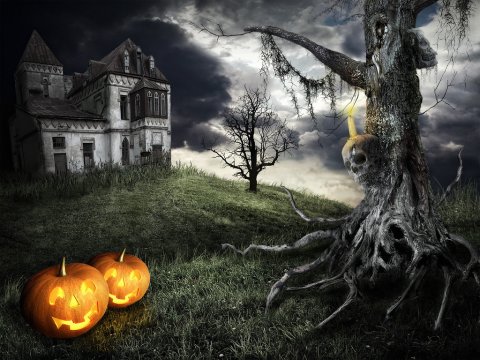
Catherine Flannagan (1829 – 3 March 1884) and Margaret Higgins (1843 – 3 March 1884) were sisters from Dublin who were convicted of poisoning and murdering one person in Liverpool, Lancashire, England and suspected of more deaths. The women collected aburial society payout, a type of life insurance, on each death, and it was eventually found that they had been committing murders using arsenic to obtain the insurance money. Though Catherine Flannagan evaded police for a time, both sisters were eventually caught and convicted of one of the murders; they were both hanged on the same day at Kirkdale Prison. Modern investigation of the crime has raised the possibility that Flannagan and Higgins were known or believed by investigators to be only part of a larger conspiracy of murder-for-profit—a network of "black widows"—but no convictions were ever obtained for any of the alleged conspiracy members other than the two sisters.
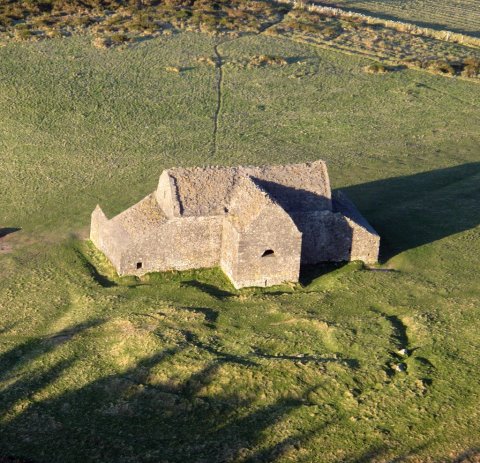
Arguably the most haunted of them all built in 1700 originally as a hunting lodge ‘The Hellfire Club’ soon became a place for young aristocrats to drink, gamble, hire prostitutes and carry out satanic worship, human and animal sacrifice and other strange happenings. There have many reported sightings of dark shadows walking and running through the rooms, and figures standing outside behind the large stones. There have been constant reports by hill walkers as well of tugs at their jewellery while they walked as well as hearing the screams of a young woman, believed to have been sacrificed sometime during the 18th or 19th century. The clubs young aristocrats murdered her by setting her alight before rolling her down the hill outside in a barrel. The most famous and disturbing story about The Hellfire Club is it is said the Devil himself appeared during a card game. What was said to be Satan himself then vanished when someone noticed that in place of feet he had cloven hooves.
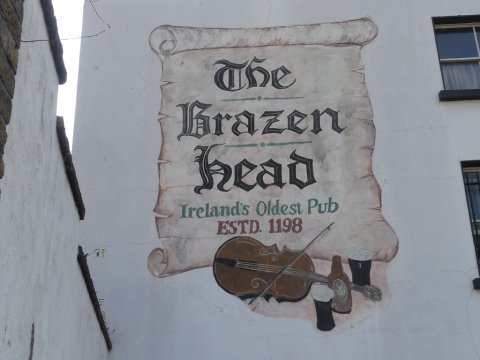
Dublin’s oldest pub built back in 1198 it’s bound to have some paranormal activity, right? Well yes it does! 5 years after the 1798 rebellion Robert Emmet lead his own rising in Dublin in 1803 against the British Empire. Emmet was eventually arrested and the hung, drawn and quartered in Thomas Street where his rebellion had failed. I know you’re thinking well what his this got to do with The Brazen Head? It is said that Emmet had secret meetings with other revolutionaries in the pub. To this day it’s said that the ghost of Emmet sits in the corner of the pub looking out anxiously for British Spies and his executioner.
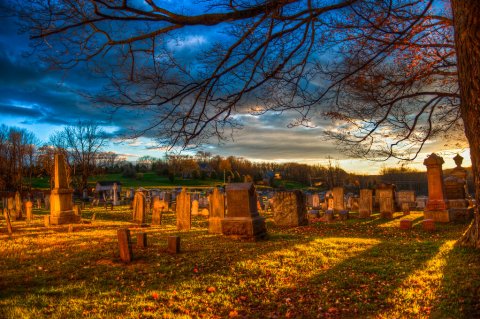
John McNeill Boyd was a 19th century Captain in the Royal Navy. McNeill Boyd died heroically at sea in February 1861 trying to save the lives of fellow sailors who were lost at sea during some of the worst storms Ireland has ever seen. The sailor was then buried in Saint Patrick’s Cathedral graveyard. It is not John McNeill Boyd who can be seen wandering the graveyard at night though but his dog. It is said that Boyd’s Newfoundland dog went out with the rescue team in the search for his body. The dog then accompanied his master’s body back to St Patrick's Cathedral where after his funeral he just lay above the ground where Boyd was buried. The dog refused to move and eventually died of starvation. Many have claimed to see the ghost of the dog under the statue at the base of John McNeill Boyd’s grave.
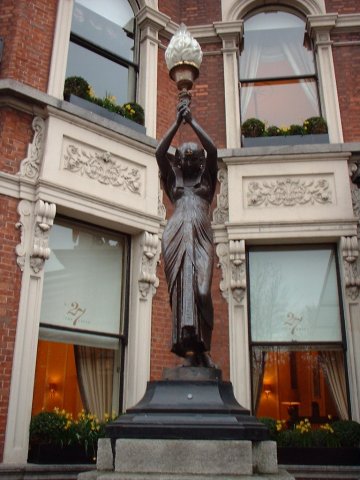
Do you fancy a stay in a five star luxury hotel? Then look no further than The Shelbourne, we must warn you though, it may be haunted. In 1965 a ghost hunter named Hans Holzer accompanied by his wife Sybil were on a visit to Dublin’s notorious haunted locations and while in Dublin they stayed in, you guessed it, The Shelbourne Hotel. One evening while in bed in room 526 Sybil heard a young girl crying and invited her in to her room yet no one could be seen. Sybil said though she felt a chilling feeling and also a woollen material brush up against her arm and cheek. When she awoke in the morning her arm was numb. The following evening Sybil spoke to the ghost who told her she was a young girl aged 7 but Sybil cannot recall the conversation. Hans concluded that the girl lived in the houses where the Shelbourne used to be and that she died of illness aged just seven in 1746 (a year Sybil wrote down repeatedly but has no recollection why).
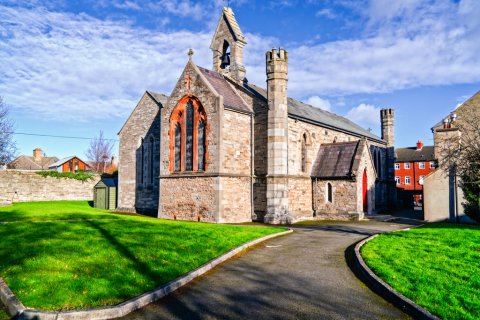
If corpses and the strange and supernatural are something you enjoy then Saint Michan’s church is the place for you. Behind great Iron doors and a narrow stone staircase you’ll walk into the crypt underneath the church. In the crypt you’ll find the preserved remains of bodies that are up to 800 years old. Coffins under the crypt are open and bodies look as if they are merely just taking a nap and might be up at any moment. Many have come out of the crypt saying that they felt a presence while some have said they heard voices and whispers as well as many saying they felt fingers press against their neck. You can rub the fingers of the corpses for good luck while there too.
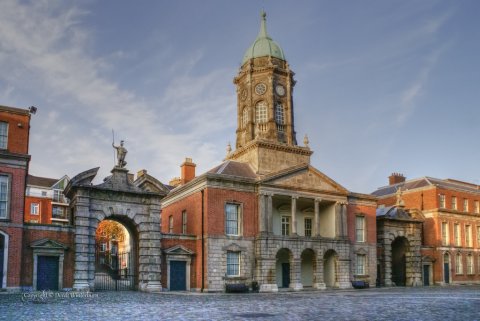
Ever visited Dublin Castle and hear a moaning? If you did not to scare you or anything but more than likely it wasn’t the living. Several people with a grudge against the castle are said to come back and haunt its grounds. One example of these is Robert de Fynglas. He was sentenced to death by hanging but instead it was decided that he be left in his cell without food until he eventually starved to death. The heads of overcome invaders were mounted to the castle walls back in the day to warn off potential enemies and there decapitated bodies were buried underneath the grounds. Hundreds of decapitated bodies are buried beneath the castle. Not surprisingly these people weren’t happy with their deaths and these vengeful ghosts still roam the castle today. Both tour guides and tourists have reported an awareness and a presence of the paranormal and poltergeist activities within the castle.
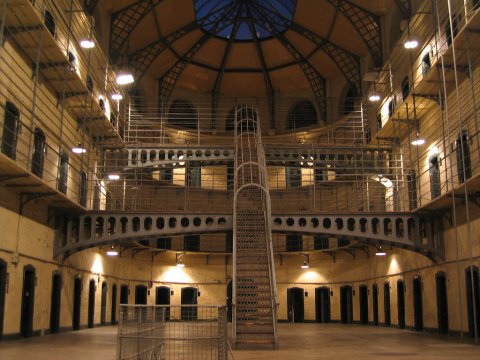
Ah you can always find a good haunted jail fairly easily. But Kilmainham is apparently haunted not only by past inmates but also wardens and surprisingly it’s the wardens who are said to be the worst of the two. Well then again they are ghosts so nothing is that surprising. The wardens are said to be angrier and unhappier then the ghostly inmates they guard and are said to be more likely to cause harm to the jails visitors. The first reports of paranormal activity in Kilmainham was said to be around 1966 when builders began restoration work on the jail. Lights would randomly turn on and off and the workers complained they were being knocked over by gusts of wind on fine days (probably the wardens). The presence of the ghosts are mainly felt around the jails chapel area.
If you want to talk about Dublin’s gruesome past Monto is probably one of the best places to start. Before we start I should warn you this part of Dublin’s much darker history. ‘The Monto’ was the nickname given to Dublin’s red-light district. The name is derived from Montgomery Street the main area the district operated from. Brothels could be found all around the Monto area; on Tyrone Street, Foley Street, Montgomery Street, Mabbot Street, Beaver Street, Purdon Street, Elliott Place, Faithful Place, Uxbridge and Nickleby. In its Heyday between the 1860s and 1900s it’s said that 1600 prostitutes were working in the area at any one time. Key factors in the size of the area were its proximity to British Army Barracks’ and Dublin Port. All classes were catered for by these ‘ladies of the night’. The Upper Middle Class spent their evenings in the parlours of Georgian style residencies. It wasn’t unusual for the odd royal to make an appearance either. The lower, working class though spent their evenings in laneways or in the infamous ‘kips’ where prostitutes were known to bed for the night. A kip was a lower standard of brothel where conditions were extremely poor compared to the flash houses which were of a higher standard and used by the upper middle class. At the centre of ‘The Monto’ was Amiens Street Station (Connolly Station). Young girls looking for work in Dublin were lured from the station into the brothels by madams. They were told at first they’d be given housework but then would be forced overtime into selling themselves for money. The girls were known to be beautiful and gorgeous when they first entered these brothels but would leave with black eyes, bruised arms and no teeth. The madams were despised by the local people of Dublin. They’d always keep the girls in debt and would buy them expensive clothes etc. They would then be thrown out on the streets when they got pregnant. After becoming pregnant these women were considered useless and would be found homeless and sleeping on the streets in doorways. Many of the locals would take them in and many of the women would abandon their child with the family. The babies became known as the ‘Monto Babies’. A child outside of marriage was frowned upon at the time so illegitimate children were very rarely kept by these women. A lot of the women contracted Sexually Transmitted Diseases and often their misery was ended in The Westmorland Lock Hospital with many apparently being suffocated to death. Although the Monto was the largest area in Dublin for prostitution it was not the only with brothels being found in the Phoenix Park, St Stephen’s Green, Sackville Street, Summerhill and many other areas too. After the withdrawal of British forces from Ireland between 1921 and 1922 the prominence of the area began to decline. The dark days of the area were eventually brought to an end in 1925 by the Legion of Mary founded by Frank Duff. The police force of the new state raided the brothels and arrested everyone connected to prostitution. Duff flushed out the remaining madams and converted many of the remaining girls to live catholic, religious lives. This was not done morally though. Women were literally thrown out onto the streets and forced into slave labour like laundries, known as Magdalene laundries one of which can still be seen in the area to this day, but that’s a story for another time.
